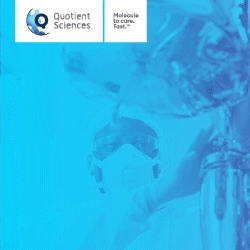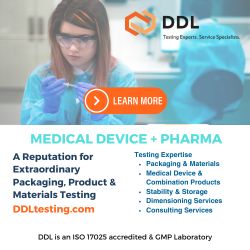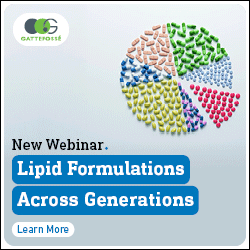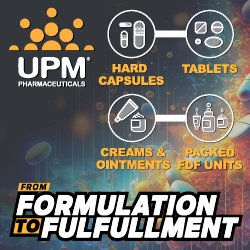Longeveron Announces Completion of Enrollment of Pivotal Phase 2b Clinical Trial Evaluating Laromestrocel as a Treatment for Hypoplastic Left Heart Syndrome (HLHS)
- Top-line trial results are anticipated in the third quarter of 2026, after the final follow-up at 12-months
- Laromestrocel Biological License Application (BLA) submission for full traditional approval for HLHS anticipated in 2026, if ELPIS II results are positive
- U.S. FDA has awarded laromestrocel HLHS program Rare Pediatric Disease designation, Orphan drug designation, and Fast track designation
- Laromestrocel HLHS program addresses unmet medical needs with U.S. market potential of up to $1 billion
Longeveron Inc. (NASDAQ: LGVN), a clinical stage regenerative medicine biotechnology company developing cellular therapies for life-threatening and chronic aging-related conditions, today announced that it has achieved full enrollment of the Phase 2b clinical trial (ELPIS II) evaluating its investigational cellular therapy laromestrocel as a potential adjunct treatment for Hypoplastic Left Heart Syndrome (HLHS), a rare pediatric and orphan-designated disease. Top-line trial results are anticipated in the third quarter of 2026, after the final follow-up at 12-months. Laromestrocel is a proprietary, scalable, allogeneic cellular therapy being evaluated in multiple indications.
“Completion of enrollment in this pivotal trial is an important step on the pathway to a potential additional treatment for HLHS,” said Nataliya Agafonova, M.D., Chief Medical Officer of Longeveron. “Current HLHS treatment requires infants to undergo a complex three-stage surgical reconstruction of their heart over the first 3-4 years of their life, yet even with this comprehensive treatment, only 50% of infants survive to adolescence due to right ventricular failure. We believe the data generated to date in HLHS support the potential for laromestrocel as a regenerative medical therapy to help these infants and look forward to sharing the data from this clinical trial when it is completed. The slight over enrollment of the trial, including two additional patients beyond target enrollment, reflects both the unmet need in this area and our commitment to support patients suffering from this devastating condition. We are grateful for the participation of the patients, their families and our investigative sites.”
ELPIS II is a Phase 2b clinical trial evaluating laromestrocel as a potential adjunct therapy for HLHS. The clinical trial enrolled 40 pediatric patients at twelve premiere infant and children’s treatment institutions across the country. The trial’s primary endpoint is a composite of survival at 12 months, length of hospitalization and change in right ventricular ejection fraction measured between baseline and 12 months. ELPIS II is being conducted in collaboration with the National Heart, Lung, and Blood Institute (NHLBI) through grants from the National Institutes of Health (NIH).
ELPIS II builds on the positive clinical results of ELPIS I, in which children in the trial experienced 100% transplant-free survival up to five years after receiving laromestrocel during the Glenn surgery, compared to an approximate 20% mortality rate observed from historical control data. Five-year post-treatment long-term survival data from the ELPIS I Phase 1 clinical trial was presented at the Congenital Heart Surgeons’ Society (CHSS) 51st Annual Meeting. Results highlights:
- Five-year post-Glenn procedure Kaplan-Meier survival was 100% in patients treated with laromestrocel in ELPIS I with none requiring heart transplant. This compared to 83% survival in the Single Ventricle Reconstruction (SVR) trial through 5 years post-Glenn surgery, and a 5.2% heart transplantation rate.
- No Major Adverse Cardiovascular Events (MACE) were reported during the study.
- No laromestrocel-related safety issues were reported.
- These findings support the use of laromestrocel as a potential adjunct to HLHS reconstruction surgery to improve transplant-free survival.
In Longeveron’s Type C meeting in October 2024 with the U.S. Food and Drug Administration (FDA), the FDA confirmed ELPIS II is pivotal and, if positive, acceptable for Biological License Application (BLA) submission for full traditional approval. The FDA has granted laromestrocel Orphan Drug designation, Fast Track designation, and Rare Pediatric Disease designation for the treatment of HLHS. Under the Rare Pediatric Disease designation, if Longeveron were to receive FDA marketing approval for laromestrocel for HLHS, the Company could be eligible to receive a Priority Review Voucher (PRV). A PRV allows for priority review of another drug application, reducing the review time from the standard ten months to just six months. The vouchers can be sold or transferred to other companies, with vouchers sold since August 2024 for $150-$158 million each. This financial incentive encourages companies to invest in the development of treatments for rare diseases. Currently, the Rare Pediatric Disease PRV program is facing uncertainty regarding its future, as it was not renewed by the U.S. Congress in December 2024, however, the U.S. House of Representatives recently passed the Give Kids a Chance Act, which, if enacted, would extend the PRV program until 2029.
About Hypoplastic Left Heart Syndrome (HLHS)
HLHS is a congenital birth defect in which the left ventricle (one of the pumping chambers of the heart) is either severely underdeveloped or missing. As a consequence, infants born with this condition have severely diminished systemic blood flow, which requires them to undergo a complex, three stage heart reconstruction surgery process over the course of the first 5 years of their lives. While these infants can now live into adulthood, early mortality is still extremely high in this population due to right ventricle failure, which is not meant for the increased load demanded for systemic circulation (blood circulation throughout the body). As such, there is an important unmet medical need to improve right ventricular function in these patients to improve both short-term and long-term outcomes.
About Longeveron Inc.
Longeveron is a clinical stage biotechnology company developing regenerative medicines to address unmet medical needs. The Company’s lead investigational product is laromestrocel (Lomecel-), an allogeneic mesenchymal stem cell (MSC) therapy product isolated from the bone marrow of young, healthy adult donors. Laromestrocel has multiple potential mechanisms of action encompassing pro-vascular, pro-regenerative, anti-inflammatory, and tissue repair and healing effects with broad potential applications across a spectrum of disease areas. Longeveron is currently pursuing three pipeline indications: hypoplastic left heart syndrome (HLHS), Alzheimer’s disease, and Aging-related Frailty. Laromestrocel development programs have received five distinct and important FDA designations: for the HLHS program – Orphan Drug designation, Fast Track designation, and Rare Pediatric Disease designation; and, for the AD program – Regenerative Medicine Advanced Therapy (RMAT) designation and Fast Track designation. For more information, visit www.longeveron.com or follow Longeveron on LinkedIn, X, and Instagram.
Total Page Views: 1158












